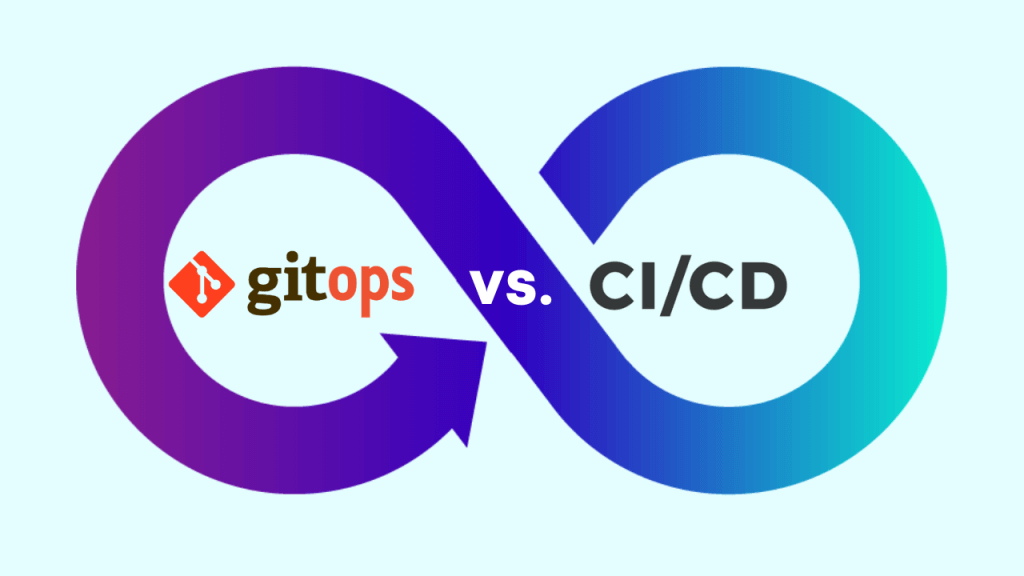
GitOps and CI/CD (Continuous Integration/Continuous Deployment) are two distinct but related concepts in the realm of software development and deployment. They both play a crucial role in automating and streamlining the software development and deployment processes, but they focus on different aspects and stages of the development lifecycle. Here’s an overview of the key differences between GitOps and CI/CD:
Also, check Free GitOps and CI/CD Courses and Certifications.
Focus and Purpose
GitOps
GitOps is primarily concerned with the declarative management of infrastructure and application configurations. It promotes using Git repositories as the source of truth for defining and managing infrastructure and application states.
CI/CD
CI/CD, on the other hand, is a broader concept that encompasses the automation of the entire software development and deployment pipeline, from code changes to testing to deployment to production.
Different scenarios and use cases
Primary Scope
- GitOps: GitOps is mainly concerned with the deployment and management of infrastructure and application configurations using Git repositories. It’s often associated with Kubernetes and container-based environments.
- CI/CD: CI/CD encompasses the entire software development lifecycle, including code compilation, testing, packaging, and deployment to various environments, not just infrastructure management.
Source of Truth
- GitOps: Git repositories are considered the single source of truth for infrastructure and application configurations. Changes made to these repositories trigger automated processes to apply those changes to the target environments.
- CI/CD: While CI/CD may use version control systems like Git for code storage and versioning, it also involves various other systems and tools for building, testing, and deploying code.
Automation Levels
- GitOps: GitOps heavily emphasizes automation for infrastructure provisioning and application deployment based on changes in Git repositories. It often employs operators or controllers to ensure that the desired state matches the actual state.
- CI/CD: CI/CD automation spans a wider range of tasks, including code compilation, testing (unit tests, integration tests, etc.), artifact creation, and deployment to multiple environments (e.g., development, staging, production).
Workflow
- GitOps: The GitOps workflow typically involves developers making changes to Git repositories, which then trigger automated processes to update the infrastructure or application accordingly.
- CI/CD: CI/CD encompasses a broader set of workflows, including code integration (CI), automated testing, and continuous delivery or deployment to various environments.
Tools and Ecosystem
- GitOps: GitOps is closely associated with tools like ArgoCD, Flux, and others that are specifically designed for GitOps workflows.
- CI/CD: CI/CD uses a wide range of tools and services for different stages of the development and deployment pipeline, including Jenkins, Travis CI, CircleCI, GitLab CI/CD, and more.
In summary, GitOps and CI/CD serve different but complementary roles in automating software development and deployment. GitOps is focused on declarative infrastructure and application management using Git as the source of truth, while CI/CD encompasses a broader set of activities related to code integration, testing, and deployment to various environments. In practice, organizations may choose to implement both GitOps and CI/CD to achieve efficient and automated software delivery pipelines.
